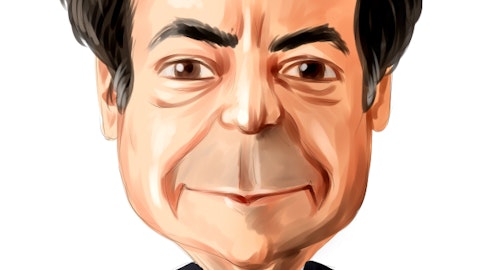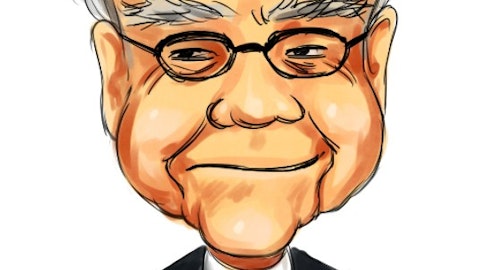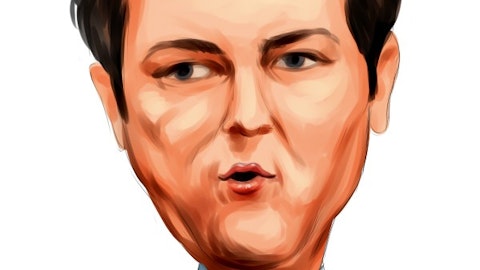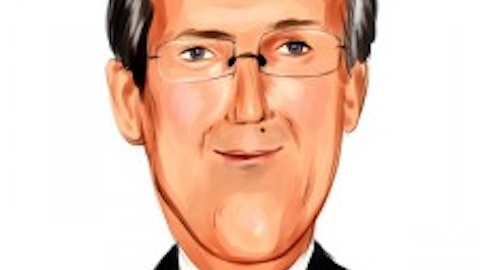Lee Ainslie launched Maverick Capital in 1993 after spending three years at Julian Robertson’s Tiger Management. Lee Ainslie is a pure long/short equity investor. He doesn’t trade bonds, currencies, commodities or options. He buys what he thinks will beat the market and he sells what he thinks will underperform. It’s as simple as that. On average, Ainslie keeps Maverick Capital’s net market exposure at around 49%.
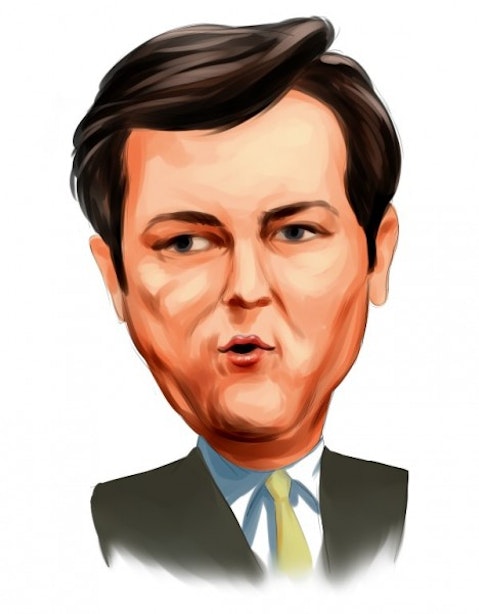
Over the last 12 years, Maverick Capital has underperformed 5 times. In 2003, 2005 and 2009 the culprit was a variety of short positions that Ainslie was on the wrong side of. In 2010, Maverick Capital came close, returning 23.6% compared to 26.5% for the S&P 500, but 2011 was not nearly as close. Ainslie’s Maverick Fund lost 14.56% through December 23rd. It may not sound encouraging but in actuality Maverick Capital has outperformed the S&P 500 by several percentage points annually, but with about 50% less volatility. This means that Ainslie’s alpha could be between 5-10% annually.
According to a 13F filed on February 14, Maverick Capital has 72 positions with a collective value of $7.19 billion at the end of the fourth quarter, up from 74 positions worth $7.16 billion at the end of the third quarter. Tyco International (TYC) was Maverick Capital’s largest position at the end of December. The fund had $281.45 million or 6.03 million shares in the company after increasing its shares in the company during the fourth quarter from 2.80 million shares at the end of the third quarter. Tyco had made billions during a period of high growth in which it made a series of acquisitions. The company claimed that each buy would provide synergy and help the company improve its economies of scale. In reality, “synergy” was more a buzz word than an adjective to describe the way things actually went. Tyco broke up its individual businesses not long afterwards. Tyco was trading at $49.95 a share and has a mean one-year target estimate of $55.25. In addition to the upside, the company also pays a $1.00 dividend (2.00% yield) and is priced low at just 12.09 times its forward earnings. Tyco’s earnings are expected to grow by 13.05% per annum over the next five years, which is slightly less than estimates for its industry, which weigh in at 16.29%.
We like Tyco but like rival Honeywell (HON) looks better. Honeywell was priced at $60.10 a share when the markets closed on February 17 with a mean one-year target estimate of $64.21. While it may have slightly less predicted upside, Honeywell pays a higher dividend at $1.49 a share (2.50% yield) and is priced just as low – it also has a forward P/E of 12.09. More importantly, Honeywell has higher earnings growth expectations. Analysts estimate the company’s earnings will increase by 14.45% P/E annum over the next five years.
Corning (GLW) was Maverick Capital’s second largest position at the end of the fourth quarter. The fund had 21.64 million shares in the company at the end of December, valued at $280.83 million. This represents a sharp decrease from the 26.16 million shares worth $323.32 million in the company Maverick held at the end of the third quarter, but, given that the position still carries enough weight to take the place of the second largest position in the fund’s portfolio, we think it is fair to say that Maverick Capital is bullish on this stock – and we can’t blame them. We are kind of sweet on Corning as well, at least over a medium-term investment horizon (as in over 3 years).
Corning was trading at $13.84 a share when the markets closed on February 17, on a mean one-year target estimate of $15.34 a share. It pays a 30 cents dividend (2.20% yield) and is priced low at 9.11 times its forward earnings. Analysts estimate Corning’s earnings will grow by 4.58% over the next five years, versus expectations of 16.29% for its industry, but looking at the bigger picture we think that estimate could be much higher. Corning is involved with a lot of LCD televisions. The demand in that market will have to increase and be sustained for a period of time before Corning will be able to leverage its capacity (which it recently increased) to increase volume while improving pricing. Corning does have any direct competitors in the US that fall within the Display Technologies segment, a fact that further illustrates why Corning is a great stock.
The third largest position in Maverick Capital’s portfolio at the end of the fourth quarter was nearly a tie between Apple (AAPL) and JP Morgan Chase (JPM). Maverick owned 690,033 shares in Apple at the end of the fourth quarter, up from 475,000 shares at the end of the third quarter. The value of its position in Apple increased from $181.13 million at the end of September to $279.46 million at the end of December. Maverick’s stake in JP Morgan Chase was nearly just as large. It was valued at $278.45 million at the end of the fourth quarter, or 8.37 million shares, from $211.01 million at the end of the third quarter, or 7.01 million shares. Other significant positions in Maverick Capital’s portfolio at the end of December include Apollo Group (APOL), Carefusion (CFN), Citigroup (C), Cigna (CI), Netapp (NTAP), Pfizer (PFE), Sara Lee (SLE), and US Bancorp.
